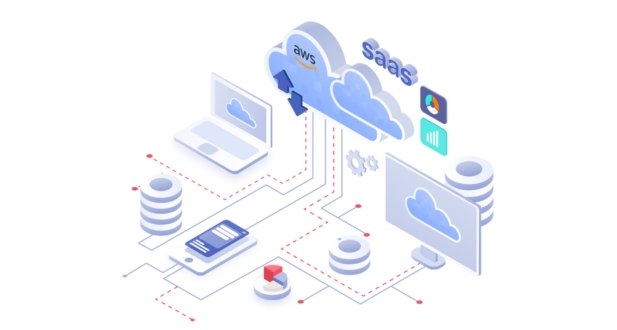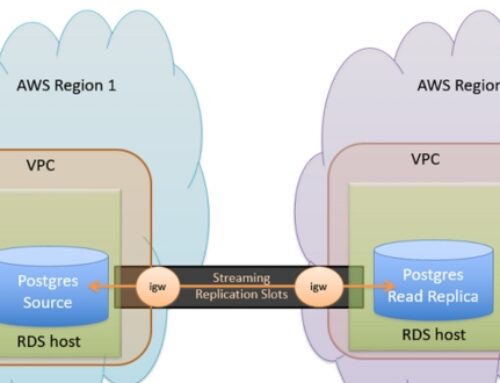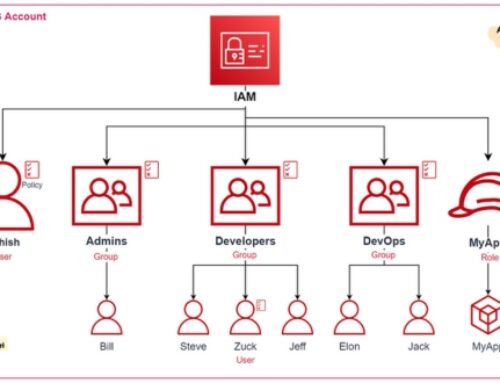Introduction to SaaS Applications
Definition and Significance of SaaS Model:
The Software as a Service (SaaS) model represents a paradigm shift in software delivery, offering a cloud-based alternative to traditional on-premise software deployment. Unlike traditional software licensing, where users purchase and install software locally, SaaS provides a more flexible and accessible solution. With SaaS, applications are hosted and maintained by a third-party provider, making them available to users over the internet. This model has gained widespread adoption due to its inherent advantages, including reduced upfront costs, automatic updates, and global accessibility.
Overview of AWS as a Leading Platform for SaaS Application Development:
Amazon Web Services (AWS) stands at the forefront of cloud computing services, providing a comprehensive platform for SaaS application development. AWS offers a suite of tools and services that empower developers to build, deploy, and scale SaaS applications efficiently. From robust infrastructure services to advanced machine learning capabilities, AWS provides a versatile and secure environment for SaaS developers. The seamless integration of AWS services facilitates the creation of scalable, reliable, and innovative SaaS solutions.
Benefits of SaaS Development on AWS
- Scalability, Flexibility, and Cost-Effectiveness:
One of the primary benefits of choosing AWS for SaaS development is the unparalleled scalability it offers. AWS provides elastic infrastructure that allows applications to scale seamlessly based on demand. Whether you’re serving a handful of users or a global audience, AWS can dynamically adjust resources to match the workload, ensuring optimal performance and cost-effectiveness.
AWS brings unparalleled flexibility to SaaS development. Developers can choose from a vast array of programming languages, frameworks, and databases, enabling them to tailor applications to specific requirements. This flexibility accelerates development cycles and allows for the incorporation of cutting-edge technologies.
Cost-effectiveness is a hallmark of AWS SaaS development. With a pay-as-you-go pricing model, businesses pay only for the resources they consume, eliminating the need for large upfront investments. This cost-efficiency is further enhanced by the ability to scale resources up or down based on usage patterns, ensuring that businesses only pay for what they need.
- Leveraging AWS Services for Rapid Development and Deployment:
AWS offers a rich set of services that streamline the SaaS development lifecycle. Services like AWS Lambda for serverless computing, Amazon RDS for managed databases, and Amazon S3 for scalable object storage contribute to the rapid development and deployment of SaaS applications. AWS’s robust infrastructure, coupled with a global network of data centers, ensures low-latency access to applications for users worldwide.
In conclusion, the combination of the SaaS model with AWS as a development platform brings unparalleled advantages to businesses seeking agile, scalable, and cost-effective solutions.
Architecture Design for SaaS Applications
In the realm of Software as a Service (SaaS) applications, the architectural design plays a pivotal role in shaping the efficiency, scalability, and security of the software. AWS provides a robust set of tools and services that allow developers to craft architectures tailored to the unique demands of SaaS development. In this section, we’ll explore three key architectural approaches: Multi-Tenancy, Microservices, and Serverless.
Multi-Tenancy Architecture
- Design Considerations for Serving Multiple Customers:
Multi-Tenancy architecture is a foundational principle in SaaS development, allowing a single instance of the software to serve multiple customers. However, the challenge lies in ensuring isolation and security between tenants to prevent data leakage and maintain confidentiality. AWS provides a range of tools to address these considerations.
- Implementing Isolation and Security Measures:
- Virtualization and Containerization: AWS provides services like Amazon EC2 and Amazon ECS, which facilitate the use of virtualization and containerization to create isolated environments for each tenant. This ensures that resources are segregated, preventing one tenant from accessing another’s data.
- Identity and Access Management (IAM): AWS IAM allows for fine-grained access control, enabling developers to define roles and permissions at the user and tenant levels. This ensures that users within a tenant can only access the data and functionalities relevant to their role.
Microservices Architecture
- Decomposing SaaS Applications into Smaller, Independent Services:
Microservices architecture involves breaking down a monolithic SaaS application into smaller, independent services, each responsible for a specific business capability. This modular approach offers several benefits for SaaS development.
- Benefits of Microservices for Agility and Scalability:
- Agility: Microservices enable rapid development and deployment cycles, as each service can be developed, tested, and deployed independently. This accelerates the overall development process, facilitating quicker time-to-market for new features and updates.
- Scalability: Microservices allow for granular scalability, where individual services can scale independently based on demand. This ensures optimal resource utilization and cost-effectiveness, as only the components experiencing increased load need to scale.
Serverless Architecture
- Utilizing AWS Lambda and Other Serverless Services:
Serverless architecture takes the concept of microservices further by abstracting away server management entirely. AWS Lambda, a serverless computing service, allows developers to run code without provisioning or managing servers. This approach has gained popularity in SaaS application development for its efficiency and cost-effectiveness.
- Advantages of Serverless for Cost Optimization and Scalability:
- Cost Optimization: Serverless architecture follows a pay-as-you-go model, where developers are billed only for the actual compute resources consumed during code execution. This eliminates the need to provision and pay for idle server capacity, resulting in significant cost savings.
- Scalability: Serverless services like AWS Lambda automatically scale based on demand. As the number of incoming requests increases, additional serverless instances are spawned, ensuring that the application can handle varying workloads without manual intervention.
In conclusion, the architectural design for SaaS applications on AWS involves careful consideration of multi-tenancy, microservices, and serverless principles.
Data Management and Storage Strategies
Efficient data management lies at the core of SaaS application development on AWS. This section delves into crucial aspects of database design, data partitioning, and isolation, addressing key considerations for scalability, availability, and compliance.
Database Design for SaaS Applications
- Choosing the Right Database Solution for SaaS Data Management:
Selecting the appropriate database solution is pivotal in determining the performance, scalability, and reliability of a SaaS application. AWS offers a variety of database services, each tailored to specific use cases.
- Relational Databases: Services like Amazon RDS provide managed relational databases, offering strong consistency and structured data storage. This is suitable for SaaS applications with well-defined schemas and relational data dependencies.
- NoSQL Databases: For applications with flexible schemas and a need for scalability, NoSQL databases like Amazon DynamoDB are ideal. These databases support horizontal scaling and are designed to handle large amounts of unstructured data.
- In-Memory Databases: Amazon ElastiCache, an in-memory caching service, can enhance performance for read-intensive SaaS applications. By caching frequently accessed data in-memory, response times are significantly improved.
Scalability, Availability, and Data Isolation Considerations:
- Scalability: SaaS applications must be able to scale seamlessly as user bases grow. AWS databases often provide automatic scaling features, allowing resources to expand or contract based on demand. This ensures that the application can handle varying workloads without manual intervention.
- Availability: Database availability is critical for uninterrupted service. AWS offers services like Amazon Aurora with multi-region and multi-Availability Zone deployments, ensuring high availability and fault tolerance.
- Data Isolation: Maintaining isolation between tenant data is paramount for security and compliance. Proper configuration of AWS Identity and Access Management (IAM) roles and access controls ensures that tenants can only access their designated data.
Data Partitioning and Isolation
Techniques for Partitioning and Isolating Customer Data in a Multi-Tenant Environment:
In a multi-tenant environment, where multiple customers share the same infrastructure, robust data partitioning and isolation are imperative. AWS provides tools and best practices to achieve this effectively.
- Horizontal Partitioning: Distributing data horizontally across multiple databases or shards allows for efficient scalability. AWS offers services like Amazon DynamoDB that inherently support horizontal partitioning, enabling seamless scaling as data volumes increase.
- Vertical Partitioning: Separating data vertically involves categorizing data based on attributes or features, enabling more efficient data retrieval. Proper indexing and query optimization are crucial components of effective vertical partitioning.
Ensuring Data Privacy and Compliance:
- Data Encryption: Implementing encryption at rest and in transit is fundamental to ensuring data privacy. AWS Key Management Service (KMS) provides robust encryption capabilities for safeguarding sensitive information.
- Compliance Measures: AWS offers tools and features to help organizations meet various compliance standards. Configuring AWS Config Rules, for example, aids in ensuring that data storage and access align with regulatory requirements.
Security and Compliance Considerations
Security and compliance are paramount in SaaS application development on AWS. This section explores robust Identity and Access Management (IAM) practices, data encryption strategies, and compliance measures to ensure a secure environment for both users and sensitive data.
Identity and Access Management (IAM)
- Managing User Access and Permissions in SaaS Applications on AWS:
IAM plays a central role in controlling access to AWS resources. In a SaaS environment, where multiple users interact with diverse features, effective IAM practices are critical.
- User Management: AWS IAM allows for the creation, deletion, and management of users, ensuring that only authorized individuals have access to the SaaS application.
- Least Privilege Principles: Adhering to the principle of least privilege ensures that users only have the minimum level of access necessary to perform their tasks. This reduces the risk of unauthorized actions and potential security breaches.
- Role-Based Access Control (RBAC): Implementing RBAC allows administrators to assign roles to users based on their responsibilities. This granular approach ensures that users have access only to the specific resources required for their roles.
- Implementation Best Practices:
- Regularly audit and review IAM configurations to identify and address any security gaps.
- Utilize IAM policies to define permissions, and avoid using overly permissive policies.
Data Encryption and Compliance
Encrypting Data in Transit and at Rest Using AWS Key Management Service (KMS):
Securing sensitive data is a fundamental aspect of compliance. AWS KMS provides encryption services that are integral to maintaining data integrity.
- Encryption in Transit: SaaS applications often involve the transmission of data over networks. Implementing protocols like HTTPS ensures that data is encrypted during transit, safeguarding it from potential interception.
- Encryption at Rest: Storing data securely is equally crucial. AWS KMS enables the encryption of data at rest, whether it’s stored in databases, object storage, or any other form. This protects data even when it’s not actively in use.
Ensuring Compliance with Industry Standards:
- GDPR (General Data Protection Regulation): Adherence to GDPR is crucial when handling personal data. AWS provides resources and tools to help organizations comply with GDPR requirements, such as data encryption and auditing capabilities.
- HIPAA (Health Insurance Portability and Accountability Act): For SaaS applications dealing with healthcare data, compliance with HIPAA standards is imperative. AWS offers HIPAA-eligible services, and proper encryption measures help maintain compliance.
Continuous Integration and Deployment (CI/CD) Pipeline
Implementing a robust CI/CD pipeline is pivotal for SaaS application development on AWS. This section explores the automation of deployment processes, utilizing AWS CodePipeline and AWS CodeDeploy. Additionally, it delves into deployment strategies such as Canary and Blue-Green deployments to ensure seamless updates with minimal disruptions.
Automating Deployment Processes
Implementing CI/CD Pipelines with AWS CodePipeline and AWS CodeDeploy:
- AWS CodePipeline: This fully-managed continuous delivery service orchestrates the build, test, and deployment phases of the release process. It seamlessly integrates with other AWS services, providing a streamlined pipeline for SaaS application updates.
- AWS CodeDeploy: Focused on automating application deployments, AWS CodeDeploy ensures reliable and scalable updates across various compute services, including Amazon EC2 instances and Lambda functions.
Ensuring Automated Testing and Validation:
- Automated Testing: CI/CD pipelines enable the integration of automated testing processes. This includes unit tests, integration tests, and end-to-end tests to validate the functionality and integrity of the SaaS application.
- Validation for SaaS Application Updates: Before deploying updates to a production environment, automated validation ensures that the new features or bug fixes meet the required quality standards. This significantly reduces the likelihood of introducing errors into the live system.
Canary Deployment and Blue-Green Deployment
- Strategies for Deploying New Features and Updates Safely:
- Canary Deployment: In a canary deployment, a small subset of users or instances is exposed to the new version of the application. This allows for real-world testing, and if issues arise, they can be addressed before a wider release.
- Blue-Green Deployment: This approach involves maintaining two separate environments – one running the current version (Blue) and the other with the updated version (Green). Once the Green environment is validated, traffic is switched, minimizing downtime and risks.
- Minimizing Downtime and Risks in Production Environments:
- Rollback Mechanism: CI/CD pipelines should include a rollback mechanism in case issues are detected post-deployment. This ensures that, in the event of unexpected problems, the system can quickly revert to the previous stable version.
- Monitoring and Rollback Triggers: Implementing robust monitoring during and after deployment allows for the automatic triggering of rollbacks if predefined metrics or thresholds indicate a deviation from expected behavior.
By embracing CI/CD practices and deployment strategies like Canary and Blue-Green, SaaS applications on AWS can efficiently adapt to evolving requirements while maintaining a high level of reliability and user satisfaction.
Monitoring and Analytics for SaaS Applications
Effective monitoring and analytics play a crucial role in maintaining the optimal performance and health of SaaS applications on AWS. This section explores key tools and practices for monitoring application metrics, setting up proactive alerts, and analyzing logs to gain insights into application behavior.
AWS CloudWatch Metrics and Alarms
- Monitoring Application Performance and Resource Utilization:
- AWS CloudWatch Metrics: AWS CloudWatch provides a comprehensive set of metrics for monitoring various aspects of SaaS applications, including compute, storage, and networking resources. These metrics offer real-time visibility into the application’s performance.
- Setting Up Alerts for Proactive Monitoring and Troubleshooting: AWS CloudWatch Alarms enable the creation of proactive alerts based on predefined thresholds. This ensures that deviations from expected performance levels trigger timely notifications, allowing teams to address issues before they impact users.
Application Logging and Analysis
- Capturing and Analyzing Logs for Insights:
- Log Aggregation with Amazon CloudWatch Logs: Aggregating logs from different components of a SaaS application provides a centralized view for analysis. Amazon CloudWatch Logs allow for the collection, storage, and retrieval of logs, facilitating comprehensive insights into application activities.
- AWS X-Ray for Application Tracing and Debugging: AWS X-Ray is a service for tracing requests as they travel through various components of a distributed application. It helps identify bottlenecks, understand dependencies, and diagnose performance issues, enhancing the overall debugging process.
- Leveraging AWS Services for Comprehensive Monitoring:
- Integration of CloudWatch Metrics and Logs: Combining CloudWatch metrics and logs offers a holistic approach to monitoring. Correlating metrics with corresponding logs provides deeper insights into the root causes of performance fluctuations.
- Automated Analysis with Machine Learning: AWS offers machine learning-powered anomaly detection for CloudWatch metrics. This automated analysis can identify unusual patterns or deviations, enabling proactive responses to potential issues before they impact users.
By incorporating robust monitoring practices and leveraging AWS services such as CloudWatch and X-Ray, SaaS applications can maintain optimal performance, identify potential issues early on, and continuously improve the user experience.
Customer Experience and Support
Creating an exceptional customer experience is fundamental for the success of SaaS applications on AWS. This section delves into strategies for user authentication, onboarding, and customer support, emphasizing the importance of seamless interactions and continuous improvement.
User Authentication and Onboarding
- Designing Seamless Authentication:
- User-Friendly Authentication: The onboarding process begins with authentication, and a user-friendly experience is crucial. Design authentication flows that are intuitive, secure, and aligned with the overall user interface.
- Integration with Amazon Cognito: Amazon Cognito simplifies the authentication process by providing a scalable and secure solution. Integrate your SaaS application with Amazon Cognito to manage user identities and authentication in a streamlined manner.
- Seamless Onboarding Experiences:
- Guided Onboarding Flows: Design onboarding flows that guide users through the setup process. Clearly communicate the value proposition of your SaaS application and help users get started effortlessly.
- Personalization and Customization: Tailor onboarding experiences based on user preferences and requirements. Offer personalized guidance and customization options to enhance user satisfaction.
Customer Support and Feedback
- Implementing Support Features:
- Ticketing Systems: Set up a robust ticketing system to efficiently handle user inquiries and support requests. Ensure timely responses and resolutions to enhance customer satisfaction.
- Knowledge Bases for Self-Service: Develop comprehensive knowledge bases that empower users to find solutions independently. Self-service options reduce the dependency on support teams for common queries.
- Collecting and Leveraging Customer Feedback:
- Feedback Loops: Implement mechanisms for collecting feedback from users at various touchpoints. Use surveys, in-app feedback forms, and other tools to gather insights into user satisfaction and pain points.
- Continuous Improvement: Actively analyze customer feedback to identify areas for improvement. Implement iterative updates and enhancements based on user suggestions to demonstrate a commitment to continuous refinement.
By focusing on user authentication, onboarding experiences, and robust customer support, SaaS applications can cultivate positive relationships with users. This positive relationship, coupled with responsive customer support and feedback-driven improvements, contributes to the long-term success and sustainability of the application.
Scaling and Performance Optimization
In the dynamic landscape of SaaS application development on AWS, scaling and performance optimization are critical for meeting user demands efficiently. This section explores the implementation of autoscaling, elasticity, and performance testing strategies to ensure optimal resource utilization and user satisfaction.
Autoscaling and Elasticity
- Implementing Auto Scaling Policies:
- Dynamic Resource Adjustment: Autoscaling allows SaaS applications to dynamically adjust resources based on real-time demand. Set up autoscaling policies that respond to fluctuations in traffic, ensuring that the application can efficiently handle varying workloads.
- Cost Efficiency and Performance: Autoscaling not only enhances performance but also optimizes costs by scaling resources up or down as needed. This elasticity ensures that you pay for resources only when they are required, contributing to overall cost efficiency.
Performance Testing and Optimization
- Conducting Load Testing:
- Ensuring Application Resilience: Perform load testing to assess how the SaaS application behaves under different levels of user activity. Identify thresholds and ensure that the application remains resilient even during peak usage periods.
- Scalability Assessment: Through performance testing, evaluate the scalability of the application. Understand how well the application can handle an increased number of concurrent users and transactions.
- Identifying and Addressing Bottlenecks:
- Bottleneck Analysis: Utilize performance monitoring tools to identify potential bottlenecks in the application. Address issues related to database performance, network latency, or inefficient code to enhance overall performance.
- Optimizing for User Experience: Performance tuning goes beyond technical considerations. Optimize the application to provide a seamless user experience by reducing response times and minimizing delays.
By incorporating auto scaling mechanisms and conducting thorough performance testing, SaaS applications can effectively manage varying workloads and ensure optimal performance levels.
Future Trends in SaaS Application Development
The future of SaaS application development on AWS holds exciting possibilities, driven by technological advancements. This section explores two key trends that are expected to shape the landscape in the coming years.
AI and Machine Learning Integration
- Enhancing SaaS Capabilities:
- Advanced Functionality: Future SaaS applications are likely to integrate advanced AI and machine learning capabilities. This includes natural language processing for more intuitive user interactions and predictive analytics to anticipate user needs.
- Personalization: AI-driven personalization will become more sophisticated, tailoring user experiences based on individual preferences and behaviors. This trend is expected to significantly enhance user engagement and satisfaction.
Serverless Computing Innovations
- Evolution of Serverless Architectures:
- Optimizing Development Processes: Serverless computing is set to undergo continual innovation, making it even more developer-friendly. Expect advancements that further optimize development processes, allowing developers to focus on code without managing infrastructure.
- Enhanced Scalability: Future serverless architectures on AWS will likely offer enhanced scalability, enabling SaaS applications to seamlessly adapt to changing workloads. This scalability ensures optimal resource utilization and cost-effectiveness.
As AI and serverless computing continue to evolve, SaaS application developers can leverage these trends to create more powerful, scalable, and intelligent applications.
Conclusion: Empowering Innovation with AWS SaaS Application Development
In conclusion, AWS provides a robust ecosystem for SaaS application development, offering a myriad of tools and services that empower developers to create scalable, secure, and feature-rich solutions. From architectural considerations to security implementations, this guide has delved into key aspects that define successful SaaS applications on the AWS platform.
As we navigate the evolving landscape of SaaS, embracing trends such as AI integration and serverless computing becomes crucial for staying at the forefront of innovation. AWS, with its continuous advancements, positions itself as a catalyst for the next wave of SaaS evolution.
By adopting best practices, leveraging AWS services, and anticipating future trends, developers can not only meet but exceed user expectations. As businesses increasingly turn to SaaS models for efficiency and flexibility, mastering AWS SaaS application development becomes a strategic imperative.
Empower your innovation journey with AWS, where the cloud is not just a platform but a realm of endless possibilities for SaaS excellence.
SaaS (Software as a Service) application development focuses on creating cloud-based solutions accessible over the internet. Unlike traditional software, SaaS applications are centrally hosted and provide subscription-based access.
AWS offers a comprehensive suite of tools and services tailored for SaaS development. With scalability, security, and a vast ecosystem, AWS is a preferred platform for building and deploying SaaS solutions.
Multi-tenancy allows SaaS providers to serve multiple customers from a shared environment, optimizing resource utilization. AWS provides tools for secure isolation, ensuring data privacy and compliance.
AWS IAM (Identity and Access Management) ensures proper user access, while AWS KMS (Key Management Service) handles data encryption. Combined, they enhance security and compliance.
Continuous Integration and Continuous Deployment (CI/CD) automate the deployment pipeline, ensuring rapid and reliable updates. AWS CodePipeline and CodeDeploy facilitate seamless CI/CD workflows.









